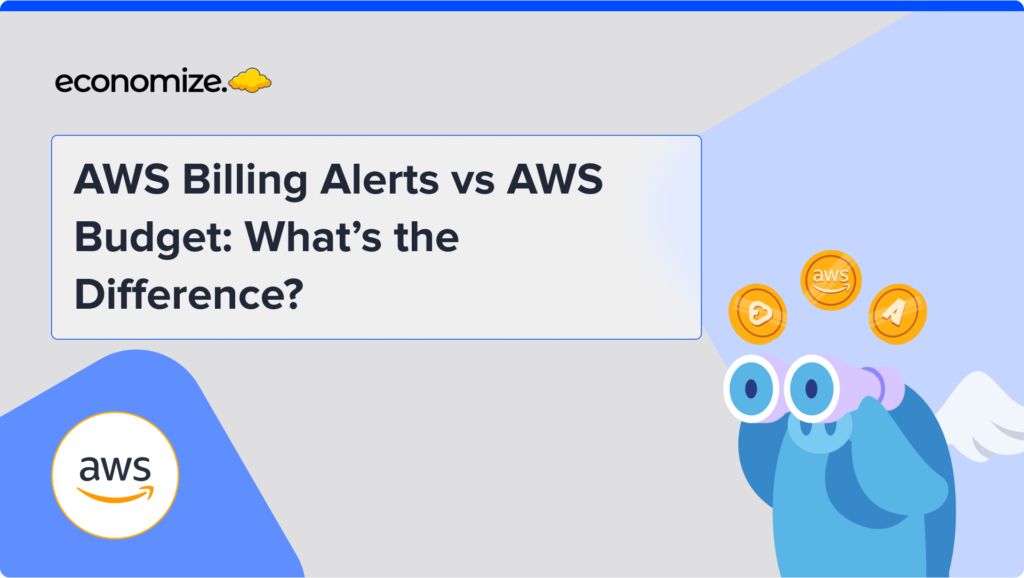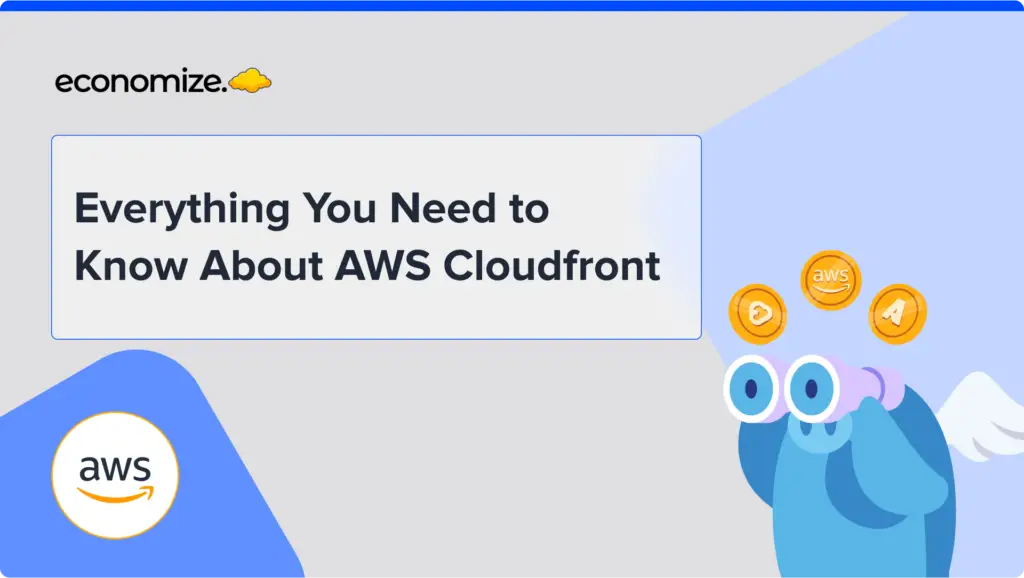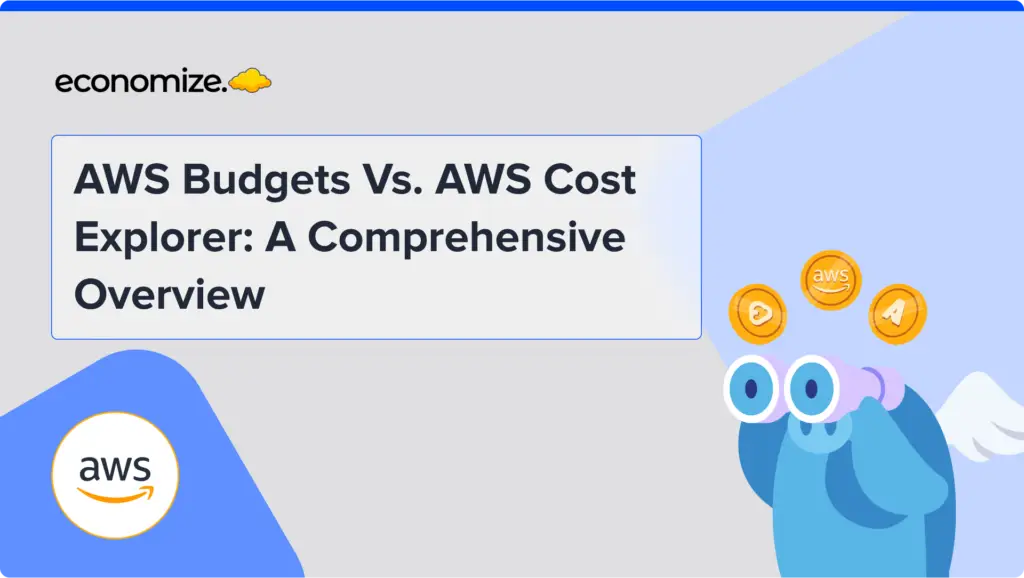With continual technological upgrades, cloud computing has made a mark in the business. The market is swelling as 41.4% expand their cloud service usage, providing users the opportunity to operate seamlessly, scale their operations, and enjoy on-demand services.
However, its adoption would require cloud costs to be reduced significantly. In this context, the adoption of Amazon Web Services (AWS), the leading cloud platform will also see an incline once cost is optimized through carefully crafted strategies.
This guide explores various strategies to optimize AWS monitoring and achieve maximum budget efficiency.
AWS Pricing Models: Understanding How You Pay
Strategies for cost optimization necessitate the understanding of how AWS charges for rendering its services. It offers different pricing structures for its services following a pay-as-you-go model. Before we delve deeper, it’s crucial to understand the key cost components associated with AWS.
On-Demand Instances
The model that offers maximum flexibility but at a higher cost is the on-demand instance, where you are allowed to pay per hour for the computing resources you use. Although an ideal option for the short term or in cases where the usage is unpredictable, it is not a suitable option for a consistent workload.
Reserved Instances
Reserved instances, as opposed to on-demand instances, are appropriate for predictable workloads and, in turn, offer better discounts. In this case, the usage pattern is specified along with a fixed cost for a one—or three-year term. To ensure maximum savings in reserved instances, it is important to choose the correct region and usage term.
Spot Instances
For workloads with flexible resource requirements that can tolerate interruptions, Spot Instances offer a highly cost-effective option. These instances utilize unused Amazon EC2 compute capacity at a significantly lower cost than on-demand instances. However, be prepared to handle potential disruptions, as AWS can reclaim Spot Instances when needed.
Storage
You pay for the storage space you provision (e.g., S3 buckets) and the data transfer out of AWS. Optimizing storage by deleting unnecessary data, utilizing lifecycle management policies, and exploring compressed storage options can lead to significant cost savings.
Database Services
The cost of database services depends on the database instance type, storage used, and data transfer. Key aspects of cost management for database services include choosing the right instance type based on workload requirements and optimizing storage utilization.
Networking
Data transfer in and out of AWS and internet gateway charges contribute to networking costs. Analyzing data transfer patterns and utilizing AWS services in specific regions can help optimize networking costs.
Optimizing Your AWS Costs: Strategies for a Cost-Effective Cloud Environment
Now that you have an idea about the different AWS pricing models let us move on to strategies directed at AWS cost optimization:
Rightsizing Resources
Workload analysis is important to zero in on the most cost-effective instance type. To arrive at this conclusion, one needs to consider CPU, memory, and storage requirements. AWS tools like Amazon EC2 Instance Advisor come in handy to help you identify and rightsize your instances.
In addition, auto-scaling can be used to scale resources up or down automatically based on the demand experienced at a given point in time. This will help eliminate overprovisioning and paying unnecessary charges.
Utilize Idle Instances
Identify and stop or terminate unused instances to avoid unnecessary charges. For stateless workloads, leverage AWS Lambda, a serverless computing service that eliminates idle costs entirely. Lambda functions only run and incur charges when they are invoked.
Embrace Spot Instances
Leverage spot instances for workloads that can tolerate interruptions. Implement robust interruption handling mechanisms to mitigate potential disruptions and ensure your applications can gracefully handle spot instance terminations. By incorporating spot instances into your infrastructure, you can achieve significant cost savings without compromising application functionality.
Proactive Cost Management with AWS Budgets and Savings Plans
Moving beyond reactive measures, AWS offers proactive tools for cost management:
Effective Use of AWS Budgets
A proactive approach to AWS cost management would entail leveraging AWS Budgets. Custom budgets for various aspects of your AWS usage, such as service category, specific resource type, or even tags can be defined in advance.
AWS Budgets alerts you when costs converge or surpass predefined limits, allowing you to identify potential cost spikes and take corrective actions before significant charges are incurred. This proactive approach helps you stay well within your budget.
Leveraging AWS Reserved Instances
As discussed earlier, reserved instances offer substantial discounts compared to on-demand pricing for predictable workloads. Analyze your usage patterns to identify workloads with consistent resource requirements. Commit to reserved instances for those workloads to achieve significant cost savings. Remember, choosing the right instance type, region, and usage term is crucial for maximizing the benefits of reserved instances.
Cost Reduction with AWS Savings Plans: A Flexible Option for Consistent Savings
Beyond reserved instances, AWS Savings Plans offer another cost-saving option with greater flexibility. With Savings Plans, you commit to a specific usage level for either compute or EC2/Fargate usage across different instance types and regions. This approach delivers significant discounts compared to on-demand pricing, even if your usage varies across instance types or regions. Savings Plans are ideal for workloads with consistent computing usage but are unpredictable.
Utilizing AWS Cost Explorer to Automate Cost Savings
Manual monitoring and analysis of your AWS costs can not only be time-consuming but also prone to errors. This is where AWS Cost Explorer comes in and empowers you to automate cost savings through detailed cost analysis and insightful reporting. Here’s how Cost Explorer helps you optimize your cloud spend:
Granular Cost Visibility
Cost Explorer provides a comprehensive view of your AWS costs, allowing you to analyze costs by service, resource type, tags, and even specific instances. This granular visibility helps you pinpoint areas for optimization and identify cost anomalies that might require further investigation.
Identify Cost Trends
Analyze historical cost data to identify trends and forecast future expenses. This enables you to proactively adjust your resource allocation or implement cost-saving measures before encountering unexpected charges.
Schedule Reports and Automate Actions
Schedule automated reports to receive regular updates on your cost usage and identify potential areas for optimization. Additionally, leverage Cost Explorer’s anomaly detection feature to automatically trigger alerts when unexpected cost spikes occur, allowing for immediate investigation and corrective actions.
Monitoring and Reporting with CloudWatch: Gaining Insights for Cost Optimization
Proactive cost management extends beyond cost analysis. AWS CloudWatch provides comprehensive monitoring and observability capabilities that can significantly impact your cloud spend:
Resource Utilization Monitoring
By monitoring your resource utilization with CloudWatch, you can identify underutilized resources that are incurring unnecessary charges. Analyze metrics like CPU, memory, and network utilization to determine if you can rightsize your instances to smaller configurations or leverage auto-scaling to optimize resource allocation.
Identify Idle Resources
CloudWatch can help you identify idle resources, such as EC2 instances, that are not actively being used. By stopping or terminating these idle instances, you can eliminate unnecessary charges and optimize your cloud spending.
Automated Cost Management
Configure CloudWatch to trigger automated actions based on predefined metrics. For example, you can set up CloudWatch to automatically stop or terminate idle instances or scale down resources when utilization falls below a specific threshold. This proactive approach streamlines cost management and ensures you only pay for the resources you actually use.
Real-World Examples of Successful AWS Cost Optimization
Understanding how other companies have optimized their AWS costs can provide valuable insights. Here are a couple of real-world examples:
- Company A: Media Streaming Platform: A media streaming service faced challenges with fluctuating resource demands during peak viewing hours. To optimize costs, they implemented auto-scaling with CloudWatch. This allowed their infrastructure to automatically scale up during peak hours to handle increased traffic and then scale down during off-peak periods. By utilizing auto-scaling, Company A ensured they had sufficient resources to deliver a seamless user experience while eliminating unnecessary charges for idle resources during low-traffic periods.
- Company B: E-Commerce Platform: An e-commerce platform was incurring significant costs for background tasks like data processing and log analysis. To optimize their cloud spend, they leveraged AWS Spot Instances for these non-critical workloads. By utilizing Spot Instances, Company B achieved substantial cost savings without impacting its core business operations. They implemented robust interruption handling mechanisms to ensure their applications could gracefully handle potential Spot Instance terminations.
Conclusion
By adopting a strategic approach to managing your AWS costs, you can maximize the benefits of cloud computing while maintaining a cost-effective infrastructure. This guide has equipped you with a comprehensive understanding of AWS pricing models, cost-saving strategies, and the various tools available within the AWS platform to optimize your cloud spend.
Implementing these strategies and leveraging AWS’s built-in cost management tools can help you achieve significant cost savings and ensure your cloud journey remains financially sustainable.
FAQs
Q1: How often should I review my AWS costs?
Ans 1: Regularly reviewing your AWS costs is crucial for identifying trends and implementing optimization strategies. A recommended cadence is weekly or monthly, depending on your resource usage patterns and budget constraints.
Q2: What are some best practices for tagging AWS resources?
Ans 2: Implement a consistent tagging strategy to categorize your resources by department, project, environment, or any other relevant criteria. This facilitates granular cost analysis and cost allocation. For example, tagging resources by department allows you to track costs incurred by each department and identify areas for potential budget adjustments.
Q3: How can I ensure my team is aware of cost optimization practices?
Ans 3: Educating your team on cost optimization best practices is vital for achieving a culture of cost-consciousness within your organization. Provide training sessions and workshops to equip your team with the knowledge and skills to make informed decisions when using AWS resources. Encourage them to consider cost implications when choosing resources and to identify opportunities for optimization within their projects.
Feeling the Weight of High Cloud Bills?
Controlling your cloud budget doesn’t have to be complicated. With Economize, we make it easy to slash your costs by up to 30%. Schedule a free demo today and begin your journey towards more manageable cloud spending. Start seeing the benefits in your budget right away.








